Pharm Exec's 13th Annual Industry Audit
After a dip into negative territory in 2012, 2013 delivered a resurgence in sales revenues, but the turnaround only spotlights a larger trend: the growing divide between the big Pharmas and the more nimble players.
Back on Track
2013 delivered a decisive stroke of good luck to the 27 companies participating in Pharm Exec's 13th Annual Industry Audit on shareholder performance. Revenues were up sharply from 2012's unprecedented plunge into negative growth, but the turnaround accentuates a larger trend apparent for several years: the growing divide between companies stumbling with the legacy of tired pipelines and the expectations burden imposed by sheer size, and those smaller, more nimble players with the price freedom that comes from charting a clear course toward therapies driven by unmet medical needs. The lesson is a simple one—on that strategy and vision thing, clarity counts.
The Pharm Exec Industry Audit occupies a unique position in the increasingly crowded field of data sets evaluating industry performance. Since its debut in 2002, the audit adheres to a simple objective: to identify how well companies are doing in advancing shareholder value. Our goal is to rank this performance on 10 metrics among the top 25 publicly traded companies by sales revenues. Most, but not all, of these metrics are financial.
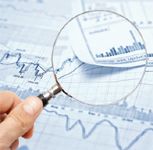
Photo: Thinkstock
This is admittedly a measure open to interpretation because there is no other standard accepted reference point that looks at performance from this perspective. But no one can argue that the approach is not relevant, given how "shareholder value" has become the rationale of choice in driving the surge in M&A and licensing transactions to near record levels so far this year.
Idiosyncratic or not, we like that the audit reveals the importance of metrics that often escape scrutiny by the major investor ratings institutions. One example is the return on assets against profits, which allows for the valuation of intangibles like patent holdings. More important, shareholder value is also a good indicator of long-term success because of its association with stability: when the investment community is happy, there is less pressure for changes in the "c-suite" and management has some leverage to place riskier bets on investments that may play out only over time.
Methodology
This year's audit has been expanded to 27 companies, three of which are new to the ranking: Regeneron, Vertex, and Valeant. Regeneron and Vertex were included due to their strong impact on the product mix through home-grown innovations that especially in the former case have fueled a fairly spectacular rate of growth in both sales and share price. We also looked for evidence of any correlation between shareholder value and the high pay packages awarded to their CEOs, at $36.3 million for Dr. Leonard Schleifer of Regeneron and $13.1 million for Dr. Jeffrey Leiden of Vertex. As for Valeant, its Tyco-like strategy of eschewing organic growth in favor of acquisitions of undervalued and underperforming assets has coined a new business model, not to mention empowering a new industry stakeholder: the activist hedge fund investor.
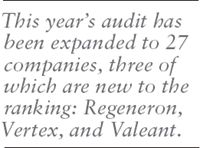
The 2014 scorecard relies on data from the 27 companies' 2012-2013 reporting periods. We rely on 10 metrics to assess performance, up from nine last year. The new entry is a powerful one: return on invested capital (ROIC), which is a measure of how well a company uses its capital investments to generate profits. This is a hot issue in the financial press. The others are unchanged from last year, and include sales growth; growth in enterprise value; enterprise value to sales; gross margins; earnings before interest, taxes, depreciation, and amortization (EBITDA) to sales (a key measure of profit margin); sales to assets (or asset turnover); EBITDA to assets, combining margin management, or profit margins, with asset management and sales to assets, resulting in a much more powerful metric than simply profit margin alone; sales per employee; and sales, general, and administrative costs to sales, an indicator of overhead.
With the exception of this last metric, on overhead, each metric is weighted, with the highest weight of three given to growth in enterprise value; enterprise value to sales; EBITDA to assets; and return on invested capital. Weights of two are given to the remainder—sales growth; gross margin; EBITDA to sales; sales to assets (asset turnover); and sales per employee.

Audit Data Sources & Table Key
The higher a company scores on each metric, the better the performance. For example, if a company places 27 on a metric, that is the highest performance compared to a score of one, which is the lowest performance. Each placement rank per metric is multiplied by the weight of that metric. Hence, if a firm places 22 out of 27 on enterprise value growth, that firm would score a total of 66 points (Rank 22 times a weight of 3 = 66). Each company's points over each metric are then added to arrive at a total point score per company from which the 27 firms are ranked to determine the audit's top performer of the year.
In addition to the above nine weighted metrics, the audit includes a few "macro" benchmarks designed to capture external influences on companies in the audit. These include economic indicators like US GDP and CPI, standard market measures like the Standard & Poor investor grade rating and the Nasdaq and Dow Jones indices, and some specific sector growth metrics. While the exposure to broad market forces is shared, companies often react—or are affected—differently. We find that those who adjust well to such forces tend to have a leg up on competitors in the final rankings.
The 'macro' context
Individual company performance must first be examined in the context of the sector's growth against expansion of the economy overall. The bar has been set low in recent years, but is slowly picking up, with the US, the UK, and other mature economics plodding along at real growth rates of around 2%.
While growth in healthcare spending has slowed as well, underlying trends suggest that the health sector is poised to outpace the overall rate of GDP growth, certainly by the end of the decade, when the demographic bulge of aging baby boomers really starts to be felt across the US and Europe. For now, however, the 27 companies in the audit easily surpassed the bar, averaging a 5.3% rate of growth in revenue over 2012 (see Annual Sales table) compared to posted 2013 US GDP growth (2.2%) and CPI (1.5%). What is noteworthy is how quickly the "Heavenly 27" marked out its solid recovery from the slip into the 2% negative growth the industry experienced in 2011-2012, which IMS reported as being the first such decline in the US market in 50 years.
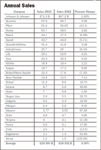
Annual Sales
The industry also compared favorably against the general trend in stock market valuations, with the Dow Jones biotech and pharmaceutical industry group rising 69.9% and 30.6%, respectively, against the overall year-end Dow Jones industrial average of 29.65%. Reflecting the searing hot market in small caps, the US Nasdaq biotech index soared into record territory in 2013, expanding 66% over 2012, compared to the 40.12% averaged for all listed companies. While the jury remains out whether this year will see sector performance trending even higher, the important point is that expectations have been set. Your last performance simply becomes the new normal.
Taking a closer look the Annual Sales table, our "grow or you die" principle remains firmly in place. Valeant led the pack in increasing sales revenue by more than two-thirds over 2012, fueled largely by its absorption of various externally acquired assets; Actavis, in third place, took the same route. Regeneron, in second, was the standout in achieving real organic growth through some highly successful new product introductions, followed by Biogen Idec and Celgene. Vertex, another top performer in the past, pulled up the rear this time as sales of its once vanguard hepatitis C treatment Incivek hit free fall, contributing to a 120% drop in revenues.

But there is always an exception that proves the rule. It is possible to grow by subtraction, evidenced by the decent year experienced at Bristol-Myers Squibb. BMS sold off its diabetes franchise to AstraZeneca yet even with lower sales, increased its profitability by balancing the 7% drop in sales against a 36% increase in shareholder value. Still, the audit reveals a significant red flag for the truly big players—Pfizer, Merck, Sanofi, and AstraZeneca—all of whom have seen their sales drop in the audit for two years in a row. This helps explain the interest of these companies in swapping assets, to bolster those areas where bench strength is already established and is thus most likely to contribute quickly to freshening the revenue base.
Enterprise value growth
Enterprise value consists of evaluating market capitalization (the number of common stock shares outstanding times price of the stock on a given day) plus cash and cash-like liquid assets, minus debt and liabilities. It is a powerful metric, one that can be influenced positively by the pursuit of an aggressive M&A strategy, as evidenced by the high scores posted by Valeant, Actavis, Endo, and Forest this year. Forest, with activist financier Carl Icahn leading the way from his perch on the company's board, came in first on this metric, with a whopping 216% increase in enterprise value, compared to the 62.7% average for all 27 firms. At the bottom end, in percent change, were most of the big Pharmas, where scoring high on this metric presents challenges due to their focus on spinning out steady high dividends and buybacks of company shares.

Enterprise Value
Enterprise value is also shaped by the breadth of a company's product line. Vertex was able to isolate some of the losses from the collapsing market for Incivek with an expanded market reach for its blockbuster cystic fibrosis drug, Kalydeco. Recent trial results show that the drug in combination with other agents would be applicable to nearly half of cystic fibrosis patients of the most common genetic mutation. Similarly, the impact of Sovaldi on Gilead's enterprise value ranking cannot be gainsaid. Gilead's $11 billion acquisition of PharmAssets may go down as one of the premier prescient buys of all time. With annual sales in the first year heading to between $7 billion and $8 billion, payback is likely to be achieved in fewer than three years, versus the more typical four to five years. On the opposite side of the coin, Novo Nordisk posted an anemic 9.6% rise in enterprise value due in part to cardiovascular risk factors associated with its flagship diabetes drug, Tresiba.
Enterprise value to sales
This metric complements enterprise value growth. While growth in EV reflects the accumulation of shareholder value over time, EV to sales is a good predictor of future growth: the higher the ratio, the more a company is viewed as having upside promise in terms of sales and profits. The lower the ratio, the lower the company is moving—at a headlong pace down the other side of the mountain.

Enterprise Value to Sales
As shown in the Enterprise Value to Sales table, Wall Street's registering of astounding growth in shareholder value is reflected in 2013's average EV to sales ratio of 6.59, compared to 2012's 3.38 ratio. Note that Valeant is ranked at a high 23, with a ratio of 9.7. This indicates there is real sentiment on the street validating CEO Michael Pearson's opportunistic "growth by acquisition" strategy. Nevertheless, organic growth registered around perceptions of a productive new drug pipeline counts as well. BMS is a standout in sales prospects in oncology, while Novartis, Johnson & Johnson, Sanofi, and Pfizer get credit for a high sales profile in vaccines. AbbVie's Humira suggests there is still strong growth to be had in the anti-rheumatics category, while there is positive speculation about its stake in a more competitive hepatitis C market.
To put the Vertex, Regeneron, Celgene, and Gilead EV to sales ratio numbers in a cross-industry perspective, the 2013 ratios for Apple, Google, and Facebook were 2.99, 5.19, and 17.10, respectively, which means that only Facebook scored better than our audit leaders—and, given the pervasive turmoil in the social media space, that advantage is likely to be temporary.
Gross margin
Gross margin (GM), or markup, is all about pricing power. It represents the difference between the cost of goods and services sold and revenues. The higher the gross margin, the more power a firm has to price with impunity while a lower GM suggests the presence of intense price competition. The average GM for the 27 companies in 2013 was 71.25%, a slight increase over 2012's 69.4%.

Gross Margin
In our industry, GM tends to be higher for companies with a portfolio geared to drugs for rare diseases and specialty care conditions, where competition is still relatively low. But the key ingredient is how well management takes advantage of that position in the market: it is interesting to see that the GM for highly diversified Sanofi is not much better than Teva's, which happens to be the biggest producer of very low-margin generics. GM is also a metric that should be showing an increase, because cost-efficient management can raise that number even in the midst of intense category competition. The deck for 2013 was fairly split, with 14 of the 27 companies showing an increase in GM; the remainder declined. GM actually dropped slightly in many of the most innovative companies, largely due to the cost burden of numerous new drug launches. Biogen Idec experienced the biggest drop, from 86.3% to 82.7%.
Perhaps the best example of sheer pricing power is in treatments for multiple sclerosis (MS). The average price increase from 2011 to 2013 for Biogen Idec's Avonex was 16.3%; for Tysabri, another drug in Biogen's MS franchise, it was 10.3%; Teva's Copaxone pushed up 15%. Compare this to the underlying rates of economic growth and inflation—both virtually flat—and you will see how impervious the market can be when there is a demonstrable medical need combined with few non-drug alternatives to treatment.
EBITDA to sales: The profit metric
This metric is a reflection of net profitability: how well a firm manages revenue, cost of goods sold, and operating expenses to secure an annual profit. The higher the percentage, the better the firm is at managing its profit margins. Pfizer stands top of the list among the 27 this year, with a profit margin of 45%, followed by Gilead (44.08%) and Biogen Idec (43.7%). It appears that Pfizer's only average GM was more than offset by a very aggressive campaign to slash general, sales, and administrative expenses, particularly on the R&D side, which gives the big Pharma giant a superior record in wresting the most from its margins.

Net Income to Sales
Sales to assets (asset management)
The Sales to assets comparison reflects how well a company manages assets like working capital and inventory along with intangible assets like IP. The two go hand in hand —or should —because there are only two ways to make money: margin management and asset management. For every dollar invested in assets, how much sales revenue is generated? At the top, placing 27, is Novo Nordisk with a S/A ratio of 1.23. This means that for every dollar Novo Nordisk invests in assets, it returns $1.23 in sales revenue. Valeant, with a S/A ratio of 0.25, occupies the bottom rung, returning only a quarter in sales for every asset dollar.

Sales to Assets
EBITDA (profits) to assets
This metric is a powerful reflection of whether a company can manage not only its revenue, cost of goods sold, and expenses, but also whether the firm can manage its assets. It is one thing to excel in margin management; it is one thing to excel in asset management. It is rare for a firm that can excel in both—you can count all the companies that excel at both on one hand, and you won't need all your fingers. Over the years, Novo Nordisk has been the standout company and thus places at 27 again this year, followed by Regeneron, Biogen Idec, and Roche.

Net Income to Assets
Return on invested capital (ROIC)
ROIC is an important metric and is new to our Audit this year. The concept has been around since the early 1980s, when the economics consulting firm Stern Stewart posited that a company must cover two capital costs: the cost of its debt and the cost of the stock. The latter item was controversial at the time due to the prevailing view that a company's common stock was "free." But Stern Stewart changed this thinking by asserting that if the market expected shares to at least approximate the average performance of its peers, it was not really free—there is a built-in expectation of value. It follows that if the total weighted average cost of capital (WACC) exceeds a company's ROIC, then shareholder value is being destroyed and the share price will not increase. In general, pharmaceutical companies tend to be financially conservative, carrying relatively low levels of debt on their balance sheets. Drug firms are so profitable spinning off so much cash and retained earnings they rarely need to take on debt or float additional common stock.

Return on Invested Capital
A good guesstimate is that the weighted average cost of capital for a big Pharma player like J&J, Pfizer, or Merck would fall in the range of 10% to 12%, while high flyers with growing pipelines like Gilead or Biogen Idec would sit a bit above 15%. Hence, a ROIC rate lower than 10% suggests that a firm is not covering its cost of capital. In addition to the negative ROIC numbers posted by Actavis, Valeant, Hospira, Endo, and Vertex, it would appear that Merck, Sanofi, AstraZeneca, Teva, Mylan, and Forest are not covering their costs of capital.
What this metric shows is that it is entirely possible for a firm to see its share price rise but, nonetheless, destroy shareholder value in the mid- to-long term. This is seen historically in the frenzy that can accompany a major M&A and the impact that has on the motivations of other pharma players. In fact, there are a lot of "c-suite" CEOs riding the momentum of a merger bubble. The analogy is of a conductor on a 200 m.p.h. bullet train who takes credit for leading the train to its final destination, but isn't it more appropriate to say he or she is merely along for the ride? Such misappropriation of credit is also evident in the current interest in M&A's that include a provision to change tax domiciles—the so-called inversion strategy. This is a tactical move that has little to do with how well a company generates ROIC.
Especially noteworthy in this regard is Valeant's strong performance on enterprise value coupled with a weak performance on ROIC, where the company stood fourth from the bottom. The average ROIC for the group was 12.38%, a drop from 2012's 14.33%, which suggests that many of our companies are only just about meeting their respective WACC's. Placing at the top is Novo Nordisk with an ROIC of 60.54 %, an increase of five percentage points over 2012.
Sales performance
Like sales to assets, sales per employee reflects a company's productivity, or what a firm produces in output compared to input. The higher the ratio, the more productive the firm is. For example, just one US worker can do the work of more than five Chinese workers (although that differential is shrinking). So even with a significant wage gap, the US can still be competitive in many markets with the Chinese because of its productivity edge. The point is you can also make this comparison among companies and how productive they are in managing their assets and employees.

Sales to Employee
The average sales per Employee for 2013 was $631,430. Gilead places at the top at 27 with sales per employee of $1.84 million, way ahead of Celgene, the runner-up, at $1.27 million. At the very bottom was Shire, with $194,590 in average sales per employee.
Selling, general, and administrative expenses
This metric, SG&A to sales, is another revealing measure of productivity. Another term for GSA is overhead. Hence the higher the ratio, the more bloated the firm is. Conversely, a lower ratio indicates a "lean and mean" mindset based on the notion that the company will tolerate doing more with less—a message that also appeals to Wall Street.

General & Administrative Expenses to Sales
The average GSA to sales for the 2013 group was 43.1%, an increase over 2012's 41.5%. This upward creep carries a warning, because in a healthcare market obsessed with establishing value and angry about the nosebleed pricing of biologics, this metric, along with revenue productivity per worker, is destined to play a greater role in financial performance. According to IMS, drug companies will need to reduce their SG&A by $36 billion through 2017 just to maintain current profitability.

And the winner is ...
The Industry Audit "Fab Five" for 2013 are our winner, Regeneron, followed by Biogen Idec, Gilead, Celgene, and Amgen. If we expand it to the "Heavenly Seven" and the "Great Eight," we add the following three companies: Shire, Novo Nordisk, and AbbVie.

And the winner is...
Like previous winners, Regeneron got the top slot by posting consistently good performance across the board, coming in at a strong second for six of the eight weighted metrics. It lagged only on ROIC, where it scored an eighth place out of 27. With its win, we can say that CEO Leonard Schliefer's $36 million pay package is vindicated, at least as a measure of shareholder value.
Another surprise from our 2013 survey is AbbVie. During its separation from Abbott Labs, the conventional wisdom held that shareholder value might be enhanced by reducing dependence on pharmaceuticals, with their high development costs and vulnerability to everything from pricing constraints to patent challenges. In comparing the first-year performance for AbbVie to Abbott, we see a radically different narrative. Although sales for Abbott Labs must be discounted due to a drop linked to the split-up, on virtually every other metric, AbbVie eats Abbott's lunch:
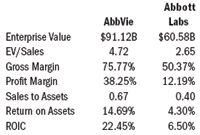
One swallow does not a season make, so we will look to see what happens the remainder of 2014.
Behind the success of the 'Heavenly Seven'
The seven lead companies are highly focused in their product offering compared to the hybrid model followed by industry giants J&J, Novartis, Sanofi, Pfizer, and GSK. This also means these companies are more nimble and flexible than their battleship-sized competitors; they are growing from a smaller base. Amgen and AbbVie posted approximately $19 billion in revenues for 2013. Adding just 10% to those sales—a reasonable expectation of Wall Street—would require some $2 billion worth of new product sold.

M&A Profile: A Tale of Two
That kind of volume in a cost-sensitive market is not an easy task to achieve organically, which helps explain the industry-wide focus on M&A activity, especially among the biggest players, where the accretive sales hurdle is even higher. Contrast this dilemma to the far more salutary situation faced by Gilead, an $11-billion company that obtained a drug through acquisition (not from its own labs) that is single-handedly adding $7 billion in new revenue in its first year—growing overall revenues by a whopping 60%.
The other distinguishing characteristic of the seven is their ability to assert pricing power by having concentrated their pipeline and licensing activities in complex, hard-to-duplicate biologics and specialty drugs for rare diseases that carry less threat of competition because the target population is so small. In addition, five of the seven were able to increase their profit margin. This has much to do with management's skill in supplementing price flexibility with tight control of operating expenses. The formula is a simple one: even when pricing power starts to fade, a reduction in operating expenses and SG&A will offset the price drop, resulting in increased profitability. Regeneron has an exemplary record in doing precisely that.

Bill Trombetta, PhD, is Professor of Pharmaceutical and Healthcare Marketing at St. Joseph's University, Haub School of Business. He can be reached at dtrombet@aol.com.
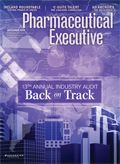
Cell and Gene Therapy Check-in 2024
January 18th 2024Fran Gregory, VP of Emerging Therapies, Cardinal Health discusses her career, how both CAR-T therapies and personalization have been gaining momentum and what kind of progress we expect to see from them, some of the biggest hurdles facing their section of the industry, the importance of patient advocacy and so much more.